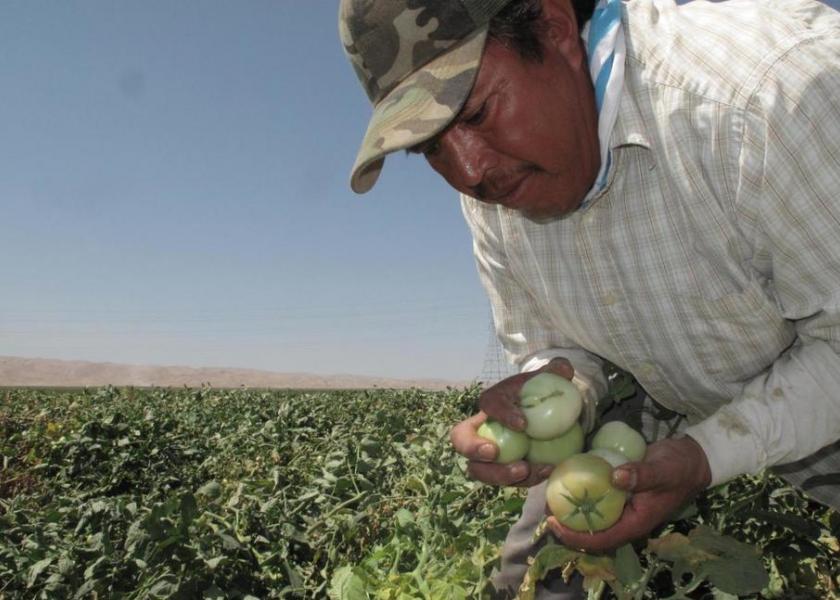California winter vegetable suppliers struggle with rising costs

If you’ve been to the store lately, you know that post-pandemic inflation is spiking in just about every category.
No matter what you want to buy, it’s probably going to cost you more. And that’s true for California’s winter vegetable grower-shippers as well.
“Every facet of our business from start to finish has accelerated 20% to 30%,” said Jeff Taylor, managing partner at Prime Time International, Coachella, Calif.
Boxes, fuel, pallets and even wood used to build pallets are more expensive and hard to come by.
“You can order them, but you can’t get them,” he said.
Pallets recently cost more than twice what they used to.
The price now is starting to fall somewhat, “but it’s still a significant increase from what it was two years ago,” Taylor said.
The situation is similar for Castroville, Calif.-based Ocean Mist Farms.
“Input costs are up across the board, and those increases affect our overall costs of goods,” said Joseph Angelo, director of sales.
At Peter Rabbit Farms in Coachella, salesman Ed Lopez said that while costs of inputs like pallets, cartons, fertilizer and fuel have gone up tremendously, it’s difficult to explain that to customers.
“We’re trying to convince people that we’re part of the economy, and our costs go up,” he said. “We can’t stay stuck in the old prices of years ago.”
Transportation is another skyrocketing expenditure.
“Freight is definitely an issue for everyone,” said Jay Angulo, salesman for Baloian Farms, Fresno, Calif.
High freight rates and a lack of drivers are major challenges.
“We work with outside haulers, and they are having issues getting drivers and in some cases retaining the drivers they have,” he said.
Fortunately, Ocean Mist Farms has a portfolio of reliable carriers that the company can partner with, said Glen Alameda, logistics manager. But still, the company has seen an increase in no-show trucks from its customers.
The bottleneck lies with the lack of drivers, not a shortage of tractor trailers, he said.
“The drivers that are available now dictate which loads they will take,” he said. “Orders with multiple drops or lanes that are seen as hard have become difficult to fill.”
Taylor agreed that a lack of drivers is plaguing the industry.
“There are trucks, but there are no people to drive them,” he said.
As older drivers retire, younger workers aren’t replacing them.
“It’s not a 9 to 5 (job),” Taylor said.
At Boskovich Farms, Oxnard, Calif., celery is a particularly tough item to haul because it only takes 700 cartons to fill a truck, said Russ Widerburg, sales manager.
That means celery costs more per box to ship than, say, green onions, that can be packed more than 2,000 cartons per trailer.
Two years ago, the cost to send a truck from California to the East Coast ranged from $6,500 to $8,000, depending on time of year and other factors, he said.
Today the cost can range from $10,000 to $12,000.
With the cost of fuel hovering around $5 per gallon in California, Widerburg doesn’t expect freight rates to drop much anytime soon.
“It’s a concern for people,” he said.
Customers of Peter Rabbit Farms don’t seem to be having trouble securing trucks, Lopez said.
“They’re just paying a lot more for them now.”
Even local California hauls have been affected by the high cost of fuel, he said.
Additional pressure has been put on the trucking industry because piggyback services offered by the railroads have not been offering reliable delivery times, he said. That creates a greater demand for trucks.
Labor is another expense in California that has been on the rise for several years, Widerburg said. And holding onto labor from one year to the next also is a concern.
The hourly minimum wage in California for companies with 26 or more employees now is $14. That will increase to $15 on Jan. 1. The rate is even higher within certain local jurisdictions.
“Before, you might have had a $10 (per box) break even on an item, while you might have a $12 or $12.50 now,” Widerburg said.
Boskovich Farms has it easier than companies that transition from one growing region to another and are continually losing and having to rehire workers, he said.
“A lot of our labor is year-round.”
Lopez said Peter Rabbit is not having difficulty finding labor, but costs have gone up – except in Mexico.







